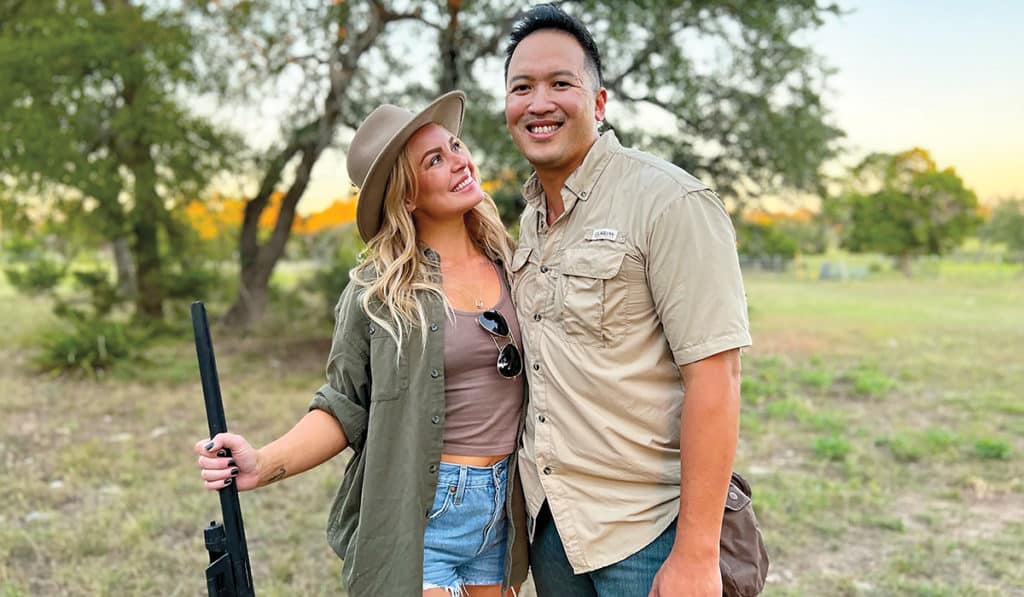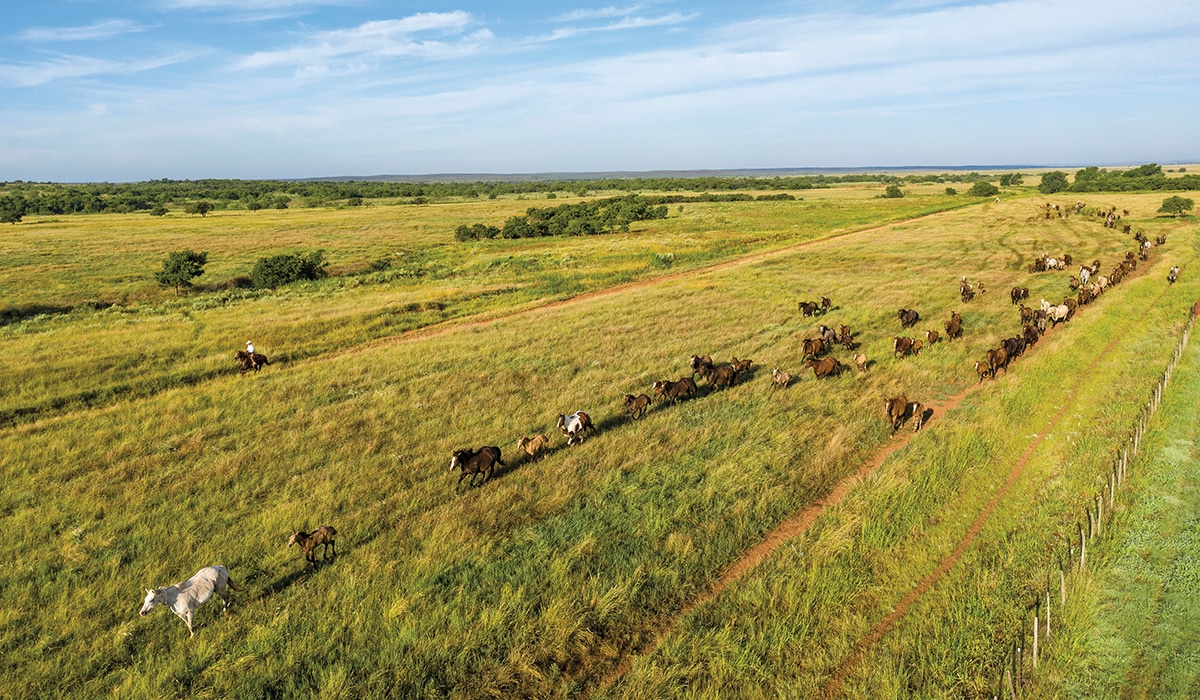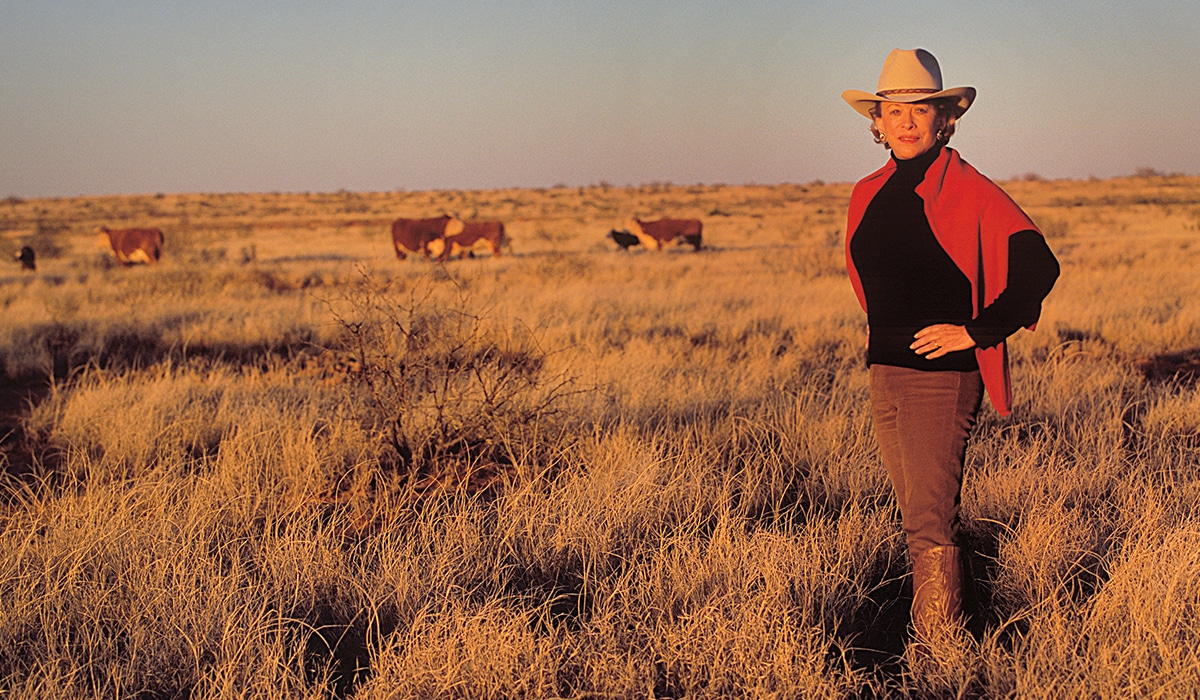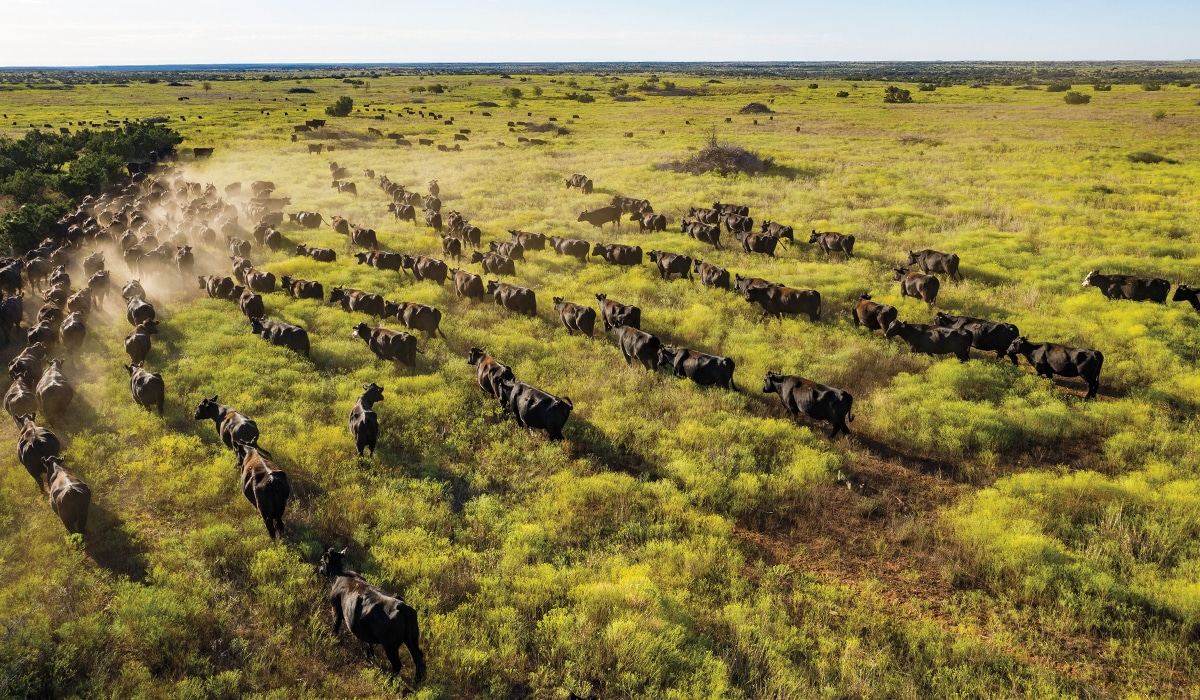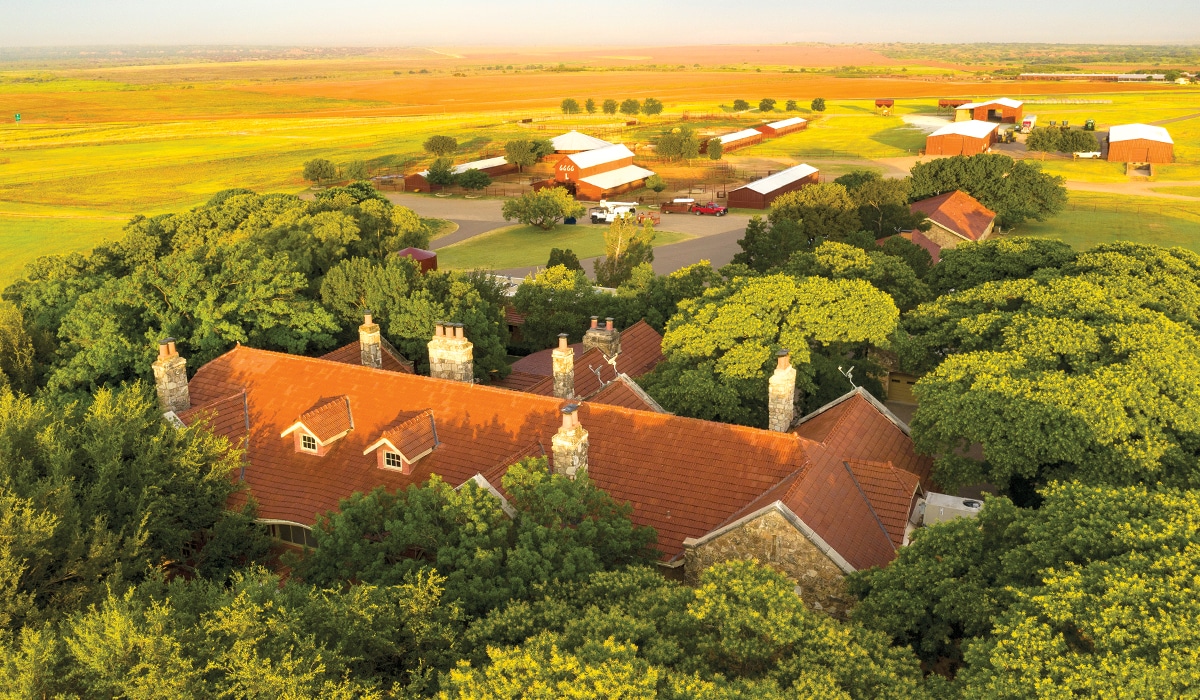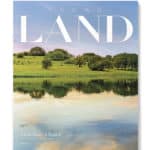
This article is featured in the Fall 2022 issue of Texas LAND magazine. Click here to find out more.
When COVID-19 prompted a world-wide lockdown, outdoors enthusiast and globe-hopping traveler Khoa Le sought out a new adventure.
“Before the pandemic, there were times I was on planes every week traveling to a different country,” said Le, an Austin-based global design strategist for IBM. “When everything stopped, I decided that if I couldn’t enjoy adventures abroad then I wanted them at home.”
He found what he was looking for himself—and his family—on six acres just outside Liberty Hill, Texas, dubbed Le Ranchito.
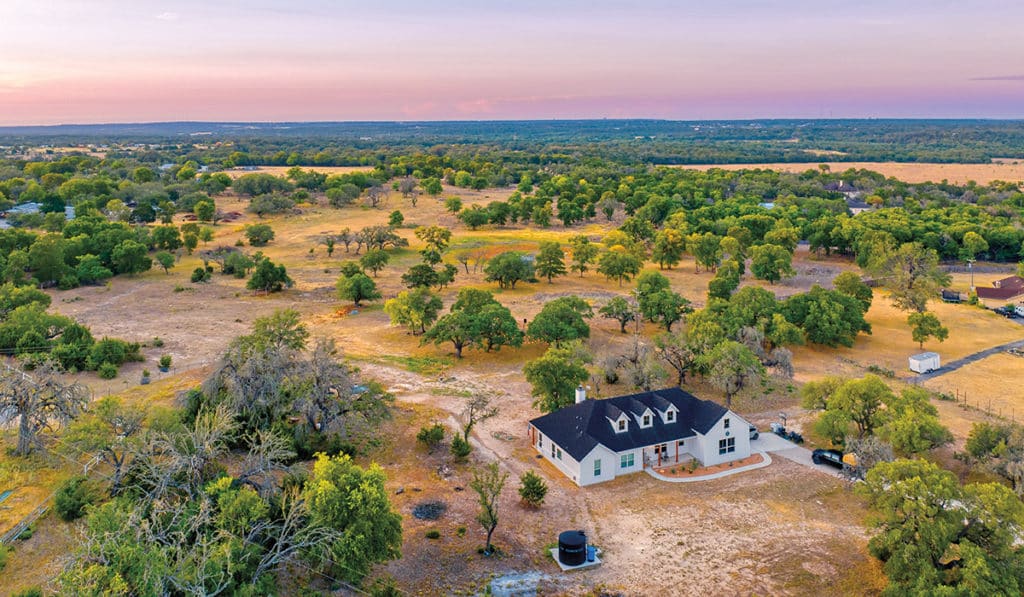
“Our land allows me to quench my thirst for adventure without leaving home,” said Le, who shares the ever-changing homestead with his three children, ranging in age from 11 to 16, and his girlfriend Kaleigh Wagner.
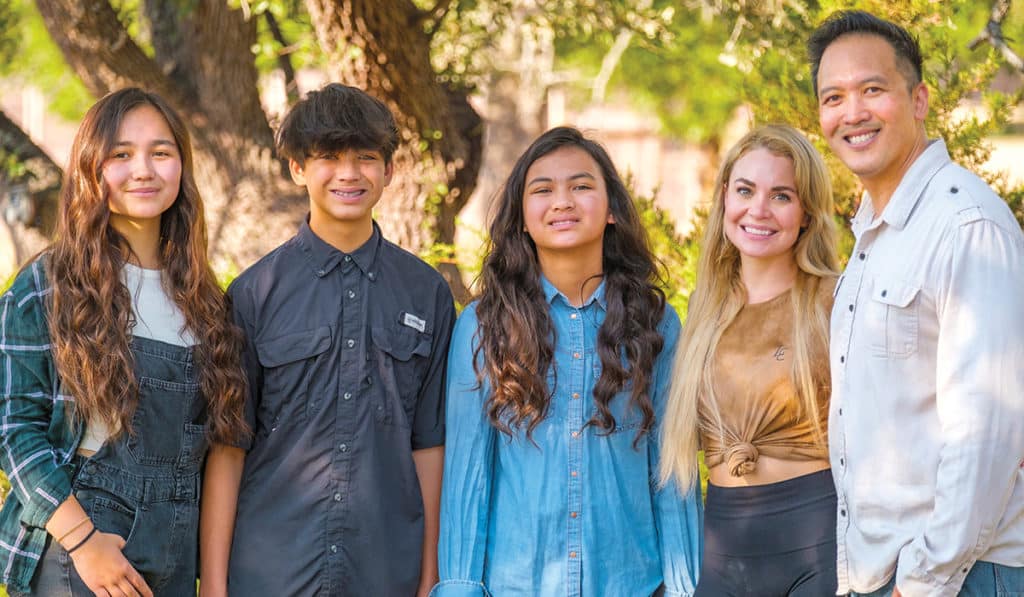
While the adventures on the family’s “micro-ranch” don’t involve pursuing big game or wandering the unfamiliar streets of a foreign city, they are equally memorable.
If you have a passion for improving the land, then the hard work isn’t as hard as it can be, especially if you have people to share the experience with”
Khoa Le
Le, a proud University of Texas graduate, could not wait to have his own Longhorns. As soon as the family completed the mettle-testing job of installing a perimeter fence in Hill Country limestone, he had two bovines—one burnt-orange-and-white cow and one burnt-orange steer yearling—delivered to the property.
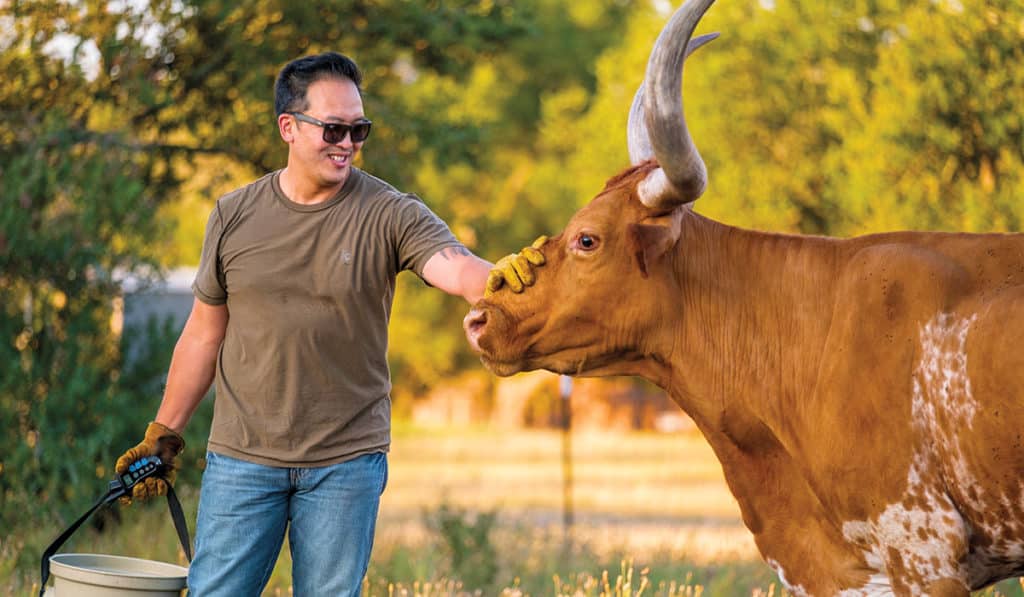
The former ad agency creative director was so excited to have Longhorns that he bought them before he had an on-site water supply for them. For a while, he dragged a 275-gallon portable tank to a carwash near his suburban home in Cedar Park, filled it with water and hauled it to the property every three or four days.
Just in case the livestock’s arrival wasn’t auspicious enough, one of them almost immediately jumped out of the temporary corral built. Of course, she waited until the experienced Longhorn wrangler who delivered her had left the ranch. In that moment, Le quit dreaming about being a cowboy and became one.
He grabbed a bucket loaded with cattle feed known as range cubes and pursued the escapee. Eventually, her urge to indulge overcame her urge to roam and she followed Le back to her new home.
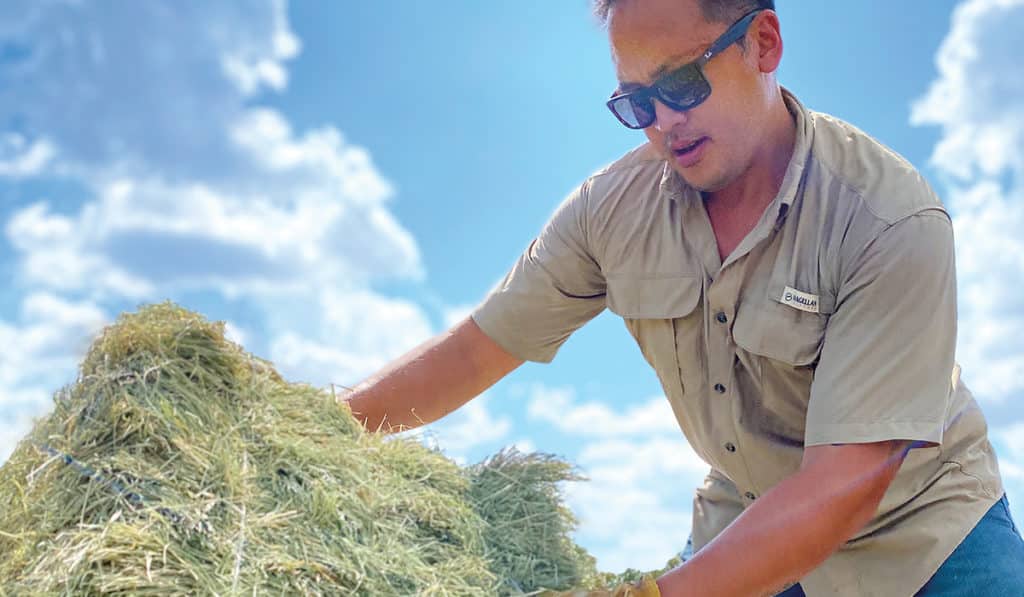
According to Le, the wanderer was content to stay put until his family hosted a party to introduce their extended family and friends to their land and livestock. After the guests arrived, the free-spirited Longhorn took flight again. Le, by this time, was non-plussed by her escape artistry and athleticism.
“I feel like a whale trainer at Sea World,” said Le, laughing. “Now, when I put cubes in the bucket, she just jumps back over the fence.”
He continued, “The Longhorns are just one more piece of Texas that we get to care for—and the stories make them that much more special.”
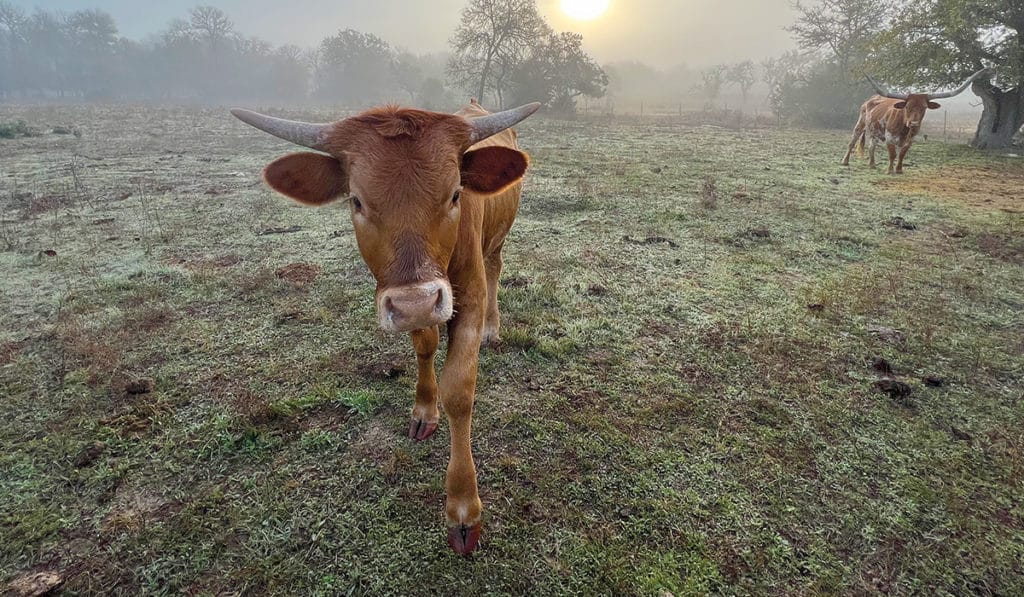
A Long Journey Home
Le, a first-generation American, has been a Texan since the early 1990s when his father, who immigrated from Vietnam, was transferred from IBM in New York to the Austin office. The family settled in Round Rock.
“I grew up in a typical, middle-of-the-road, middle class, cookie cutter subdivision,” Le said. “My friends and I stayed outside all the time, but our upbringing certainly wasn’t rural or agrarian. For some reason, though, the idea of living on the land appealed to me.”
After his college years, Le’s career in advertising and marketing took him to TracyLocke in Dallas. There the lifelong suburbanite became an urbanite, living near Love Field. As his family grew and the kids got older, the constraints of city life began chafing.
The public schools in Dallas didn’t offer the educational environment, Le wanted for his children. The cost of private or charter schools for three youngsters was prohibitive. The only affordable houses were older fixer-uppers that required extensive renovations and on-going maintenance.
The sirens of suburbia began to sing. Le was seriously considering relocating to Plano or another bedroom community in DFW, when Austin-based companies began reaching out with a variety of job opportunities. Le’s parents and his sisters still live in the Austin-area, which only increased the attraction.
“If I was going to move to the suburbs anyway, I thought it would be great to be closer to family,” Le said.
While he never expected to be part of the “family business,” he joined IBM about six years ago to help the technology behemoth launch its design arm. Le chose to relocate to Cedar Park, a once small town turned quick-growing suburb about 16 miles northwest of Austin.
In Cedar Park, Le purchased a recently constructed house, enrolled his children in good schools, and settled into typical suburban lifestyle. Like many American families, their life included overbooked calendars, restaurant meals and the incessant hum of modern hustle and bustle.
“Our life was good, but at the same time I craved excitement, adventure and living in touch with the land,” Le said.
Long before Le answered the call of the country, he answered the call of the wild. His childhood was colored by stories of the hunting and fishing adventures his father and uncles had shared with his grandfather in their native Vietnam and beyond. His favorite childhood memories are visits to his uncle’s home where Le spent long summer evenings sitting beside his sisters as they ate candy, laughed and stared at lines baited for catfish.
As he got older, Le continued hunting and fishing with friends. Now, his kids are his companions in the field. It’s a tradition that binds the generations.
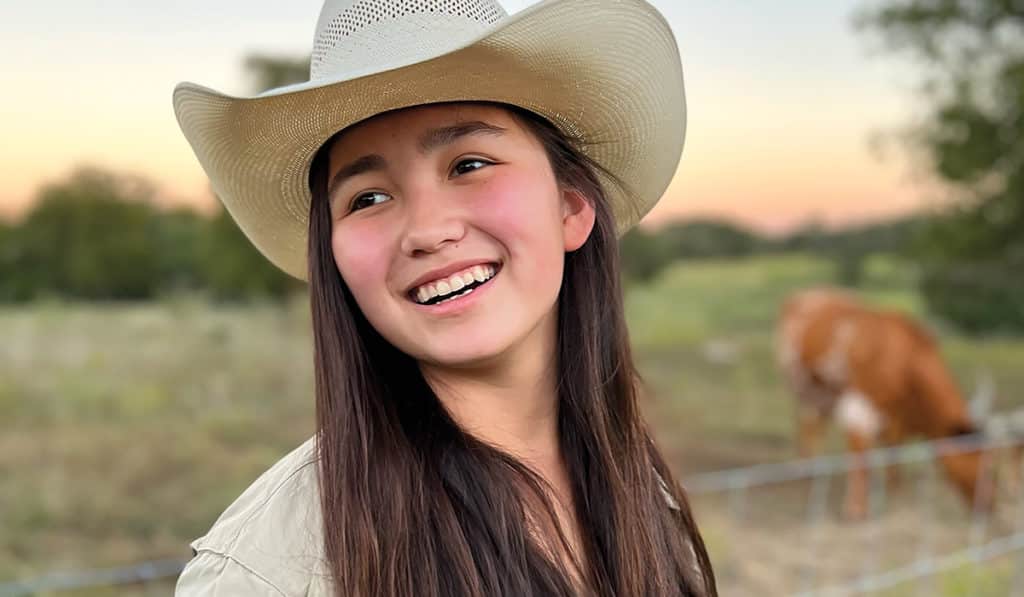
“My grandfather is gone now, but I do feel a connection with him when I’m out hunting,” Le said. “Plus, when I’m hunting, I feel like I’m in a different country. As I move through the land, it’s as if I have to assimilate into a different environment.”
The Promised Land
When Le began to search for property in June 2020, he hoped to be able to purchase enough acreage to manage white-tailed deer and other wildlife. Ideally, the property would be unrestricted by an HOA or other regulatory body, so the family could hunt, and it would contain a stock pond that could provide water for wildlife and angling.
Because of its size and use, Le’s dream property would qualify for an agricultural or wildlife tax valuation. The ideal property would be far enough away from Austin to isolate it from development, but close enough to make reaching the city’s creature comforts as well as the children’s Cedar Park schools easy.
The price-point realities of the high-demand land market around burgeoning Austin ultimately downsized the property, but not the adventure. In fact, the 6-acre micro-ranch, like Baby Bear’s bed, turned out to be “just right.”
“Our ranchito is the perfect size for us,” Le said. “We don’t have the experience or the time right now to manage more acreage. We get to live a rural lifestyle on a small scale—and that makes us insanely happy.”
Grounded Lessons
Land, regardless of the acreage, is nature’s school room. Caring for it not only instills lessons of ecology, biology and economics, but life lessons that shape character and relationships.
“I wanted to be engaged in a rural lifestyle and introduce my kids to it,” Le said. “And when they’re grown, they can look back and say, ‘Hey, we had a unique upbringing—and learned a lot along the way.’”
As soon as Le closed on the property in September 2020, the immediate family began investing sweat equity into their new spread. While a contractor would build their new home, they committed to doing all the land work themselves.
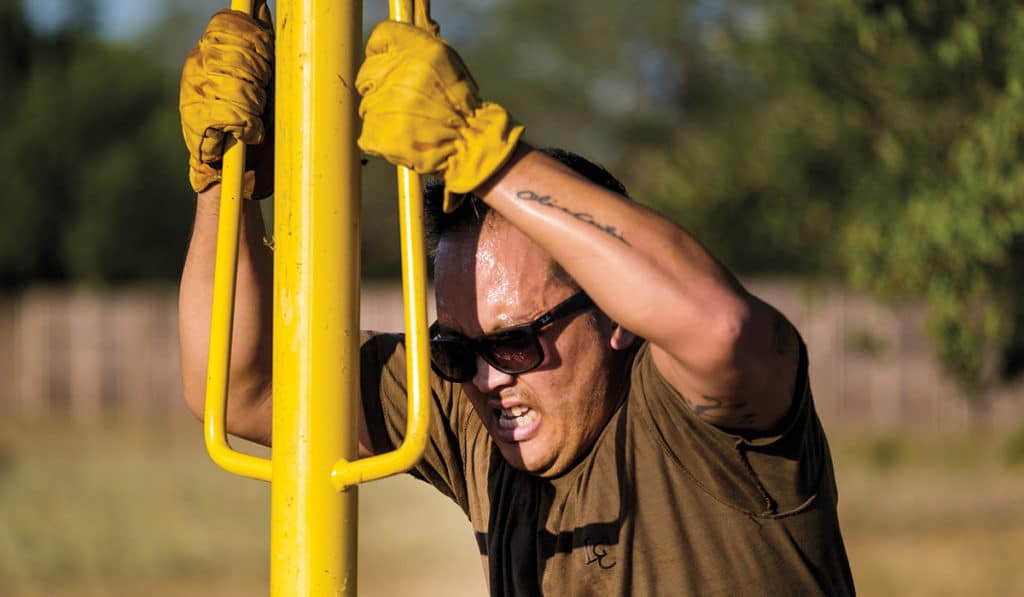
The fences came first. Le and Wagner learned to build H-braces, necessary for installing corners, gates and providing reinforcement for long stretches of fencing, by watching YouTube videos.
“With technology, there are a lot of avenues for learning,” Le said. “For me, it’s enjoyable to do research and figure out how to do whatever we’re doing.”
The duo, who doesn’t own a tractor or skid steer, quickly discovered that driving t-posts into limestone by hand can be a shirt-drenching, muscle-cramping, hand-blistering experience. A friend, who grew up on a ranch in the Pineywoods of East Texas, suggested they rent a skid steer and use it to tamp the metal posts into the ground.
The plan was good, except for one oversight, which Le quickly discovered. From the seat of the rented skid steer, he watched as the first metal post that he attempted to install bent like overcooked spaghetti when the machine’s bucket struck it. As the plan was hatched, no one had considered that the sandy, loamy, clay soils of East Texas are much softer than the Hill Country’s calcareous, hard pan limestone.
Over time, the fencing technique was perfected. As Le and Wagner installed the posts and H-braces, the kids rolled out the wire alongside. Everyone pitched in to stretch and attach the wire. The day they completed the perimeter fence was a high watermark day.
It’s just so gratifying to see the people I care about enjoying the land that we all care about— and care for”
Khoa Le
“Of course, we’ve still got more fencing I want to install, so I consider it an on-going project,” Le said. “But man, it felt good to get it done for a season.”
As Le can attest, land ownership comes with an ever-changing, ever-growing to-do list. In addition, to fence building, the family has installed raised garden beds. Summer arrived early this year and the hot, dry weather has kept the vegetables from thriving, but the family has grown a bumper crop of dill and basil.
Uncooperative weather, beginning with the big freeze of 2021 that reduced seedstock, has put plans to reestablish native grass and wildflower meadows on hold. A chicken coop is on the drawing board. The family raised chickens at their suburban home, where they developed a taste for home-grown, free-range eggs. They’re looking forward to adding a feathered flock to the menagerie.
Since the house was completed in November 2021, they’ve installed a water-wise landscape featuring a mix of cacti, hardy Texas natives and deer-resistant grasses. As an homage to their beloved Trans Pecos, the family is transforming an unsightly, rocky berm at the back of the property into a showcase for a collection of yucca, prickly pear and ocotillos. Eventually, the “desert scape” will form the backdrop for a cowboy-pool made from an oversized water trough, providing a place to soak away the day’s labor and soak up one another’s company.
“If you have a passion for improving the land, then the hard work isn’t as hard as it can be, especially if you have people to share the experience with,” Le said. “If you’re fueled by passion and enjoy the outcomes, the rewards outweigh the dirt, sweat and pain because it makes for a richer life.”
The Rich Rewards
Stewarding their piece of Texas has added the richness of new experiences and deeper connections.
“Owning land has changed the way we interact 100 percent,” Le said.
Nightly dinners steeped in conversation have replaced hurried restaurant meals. Trips to Winkley’s General Store to pick up 1,000-lb. hay bales for the cattle are a family affair as are daily chores and land-based improvement projects.
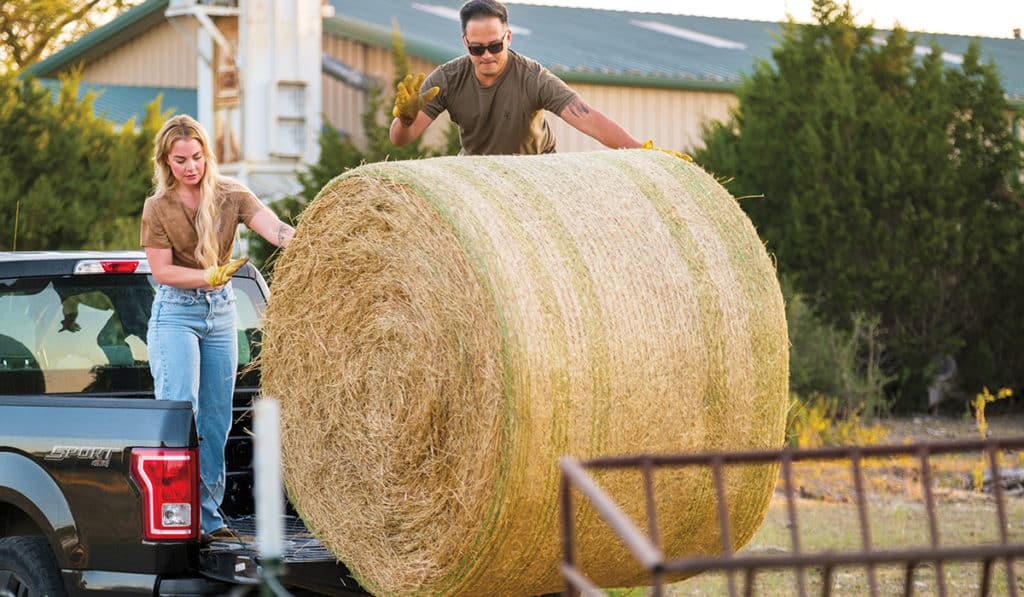
A well-placed deer feeder attracts the family’s wild neighbors, making watching deer and other critters a part of most days. The kids have a place to run with the family’s two dogs and roam on the ATVs. When they step outside at night, the family is awash in a sea of stars and bathed in the sounds of nature.
Extended family, who used to just pop in and out for quick visits, now come and stay. They seek out reasons to gather and celebrate one another in the relaxed, slower-paced rural setting.
“Having others to enjoy the land with just adds another layer of richness to the whole incredible experience,” Le said. “It’s just so gratifying to see the people I care about enjoying the land that we all care about—and care for.”
Even with the challenges of driving t-posts into limestone in 100°F heat, Le would do it all again—and on a bigger scale. At some point, he’d still like to acquire enough land to manage for white-tailed deer and other wildlife. He is confident the experience he is gaining from micro-ranching will translate into positive results on a larger landscape.
“Eventually, I want to get a place where I can preserve a slice of Texas as it’s meant to be, uninterrupted by development,” Le said. “Trying to enhance land that you own is an indescribable experience.”
For those who are considering buying property, but aren’t sure that they have what it takes, Le suggests embracing the adventure.
“Don’t be too intimidated by what you don’t know,” Le said. “As long as you have enthusiasm, passion, a good attitude, a willingness to learn and people to share it with, even the worst day on the land is a good one.”
